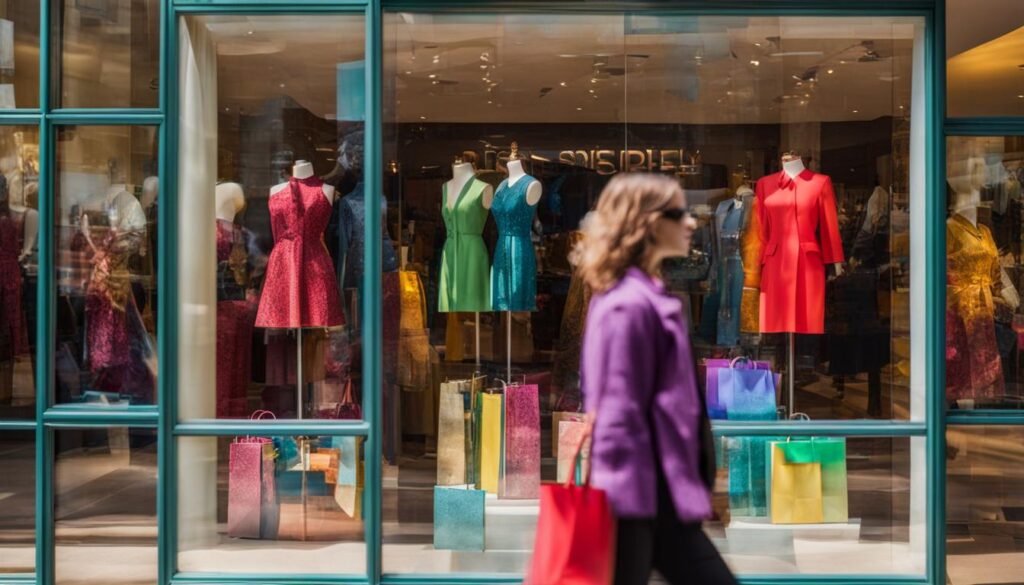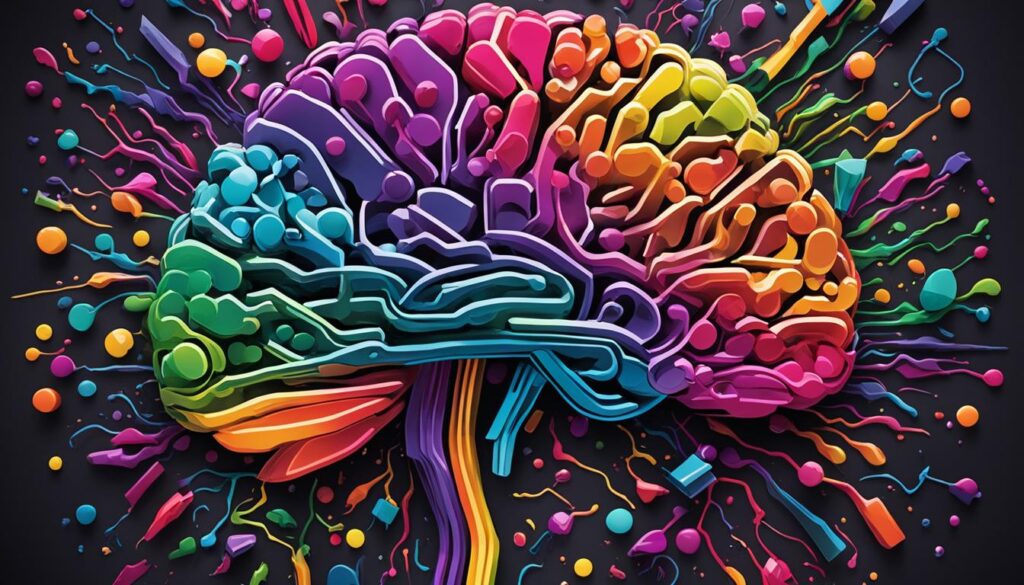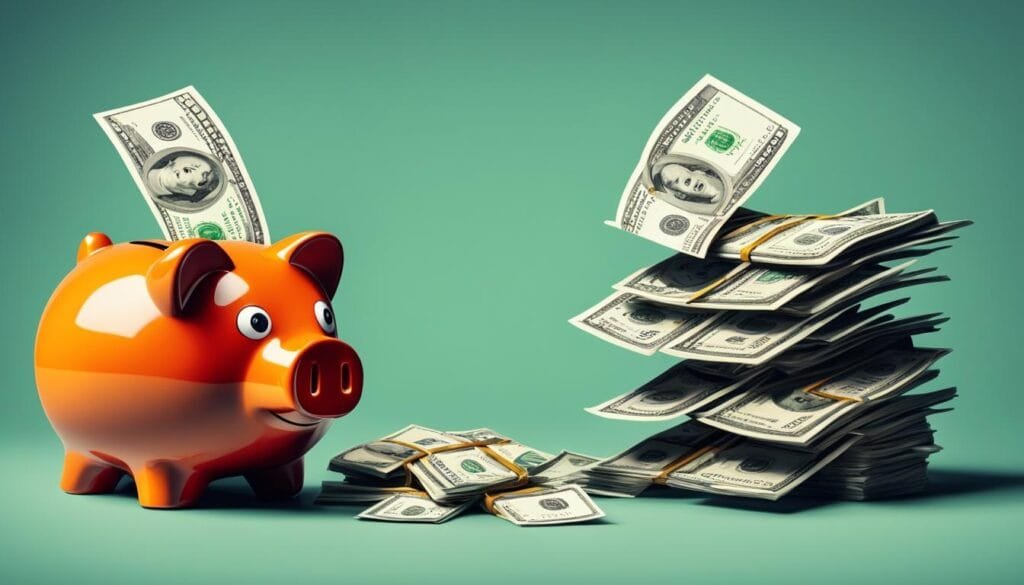Retail therapy, despite its name, is not a form of therapy in the conventional sense. However, it has gained recognition for its ability to have a positive impact on mood and emotional well-being. Engaging in retail therapy, which involves shopping as a means to improve one’s mood, has been found to provide temporary relief from negative emotions and boost overall mood.
Studies have shown that unplanned shopping and resisting the urge to buy something can have mood-boosting benefits. Additionally, retail therapy is associated with a sense of control and empowerment, particularly when individuals are feeling sad or stressed. The act of shopping allows individuals to make choices and exercise autonomy, which can counter feelings of powerlessness.
It is important, however, to practice moderation and exercise caution when using retail therapy as a coping mechanism. Overspending or relying solely on shopping to cope with emotional distress can have negative consequences, such as financial strain or an unhealthy dependence on consumerism.
Key Takeaways:
- Retail therapy is not actual therapy, but it can improve mood and relieve bad moods.
- Unplanned shopping and resisting the urge to buy can have mood-boosting benefits.
- Retail therapy is associated with a sense of control and empowerment.
- Practice moderation and avoid overspending or relying solely on shopping as a coping mechanism.
- Retail therapy should not replace professional therapy for deeper emotional distress.
The Benefits of Retail Therapy
Retail therapy offers more than just a temporary escape from reality. It can provide a range of benefits that contribute to overall emotional well-being. By understanding the positive effects of retail therapy, individuals can make conscious choices to engage in this form of self-care. Let’s explore the various benefits of retail therapy:
Mood Boost and Stress Relief
Retail therapy has been shown to have a positive impact on mood, offering a temporary uplift in spirits and alleviating stress and sadness. When we indulge in shopping, our brains release endorphins, which are often referred to as “feel-good” hormones. This release of endorphins can help combat negative emotions and create a sense of joy and satisfaction.
Empowerment and Control
During challenging transitions or periods of uncertainty, retail therapy can provide a sense of empowerment and control. When we make intentional choices about what to purchase, we regain a feeling of power over our lives. This act of choosing and acquiring desired items helps foster a sense of autonomy and confidence.
Social Connection
Retail therapy can also serve as a social activity, creating opportunities for connection and bonding with others. Whether it’s shopping with friends, family, or even engaging with sales associates, the act of shopping can facilitate meaningful interactions. Sharing shopping experiences and exchanging recommendations can strengthen relationships and enhance social well-being.
Positive Emotional Effects
Studies have indicated that purchasing desired items during retail therapy can produce positive emotional effects. Unlike impulse buying or excessive spending, responsible retail therapy helps to avoid negative consequences such as buyer’s remorse or guilt. By consciously choosing items that align with personal preferences and values, individuals can experience a genuine sense of happiness and satisfaction.
“Retail therapy has the power to provide a temporary mood boost and a sense of empowerment. It can be a form of self-expression and a means of creating positive emotional experiences.” – Dr. Emily Smith, Psychologist
Overall, retail therapy offers a range of benefits. It can provide a temporary mood boost, offer a sense of empowerment and control, foster social connections, and result in positive emotional experiences. However, it is important to practice retail therapy responsibly and be mindful of its potential limitations. In the following sections, we will delve into the psychology behind retail therapy and discuss strategies for finding balance in this unique form of self-care.
| Benefits of Retail Therapy | Description |
|---|---|
| Mood Boost and Stress Relief | Retail therapy can provide a temporary uplift in spirits, alleviating stress and sadness. |
| Empowerment and Control | Engaging in retail therapy can create a sense of empowerment and control, especially during difficult transitions. |
| Social Connection | Shopping serves as a social activity, fostering connections with others and enhancing social well-being. |
| Positive Emotional Effects | Purchasing desired items during retail therapy can lead to positive emotional experiences without negative consequences like buyer’s remorse or guilt. |
The Psychology Behind Retail Therapy
Retail therapy, despite not being an actual therapy, has profound psychological effects on individuals. Understanding the psychology behind retail therapy can help shed light on why it can be an effective mood booster and stress reliever.
Retail therapy works by tapping into the brain’s reward center, triggering a release of dopamine. Dopamine is a neurotransmitter associated with pleasure and reward, creating feelings of happiness and satisfaction. When individuals engage in shopping, whether it’s physical or online, the brain’s reward center is stimulated, leading to a surge in dopamine levels and a boost in mood.
In addition to the release of dopamine, retail therapy also provides a sense of control and autonomy. Making purchasing decisions gives individuals a sense of power and agency, which can counter feelings of powerlessness or helplessness in other areas of life. By engaging in retail therapy, individuals are able to regain a sense of control and restore their emotional equilibrium.
The act of shopping, whether in a physical store or online, is a sensory experience that can distract individuals from anxiety and stress. The visual displays, the touch of fabrics, and the excitement of finding a desired item all contribute to a pleasurable and engaging experience. The sensory stimulation provided by shopping serves as a temporary escape from negative emotions, redirecting focus and boosting mood.
Anticipation and Dopamine Release
“The anticipation of making a purchase can be just as rewarding as the actual act of shopping.”
Furthermore, the anticipation of making a purchase can also trigger the release of dopamine. Research has shown that the mere thought of acquiring a desired item activates the brain’s reward system, leading to increased dopamine levels. This anticipation and visualization create a positive emotional response, even before the actual shopping takes place. It demonstrates the powerful psychological impact that retail therapy can have.
In summary, retail therapy influences the brain’s reward center, releases dopamine, and provides a sense of control and autonomy. The immersive and sensory experience of shopping can distract from anxiety and stress, boosting mood and emotional well-being. Even the anticipation of making a purchase can trigger dopamine release, further enhancing the positive effects of retail therapy.
Finding Balance: When Retail Therapy Becomes Harmful
While retail therapy can be beneficial in moderation, it is important to be cautious of its potential negative effects. Using shopping as the sole way to cope with distress or as a primary coping mechanism can prevent individuals from seeking more effective forms of support, such as therapy. Overspending or going into debt can lead to financial distress and increased stress. Compulsive shopping, characterized by uncontrollable urges to buy and feelings of guilt or regret, is a related but distinct issue.
Although retail therapy may provide temporary relief, it is essential to distinguish between responsible retail therapy and compulsive shopping. The latter can have detrimental effects on emotional wellbeing and financial stability. Relying solely on shopping as a coping mechanism may offer short-term mood improvement but fails to address the underlying causes of distress or mental health concerns.
“Using shopping as the sole way to cope with distress or as a primary coping mechanism can prevent individuals from seeking more effective forms of support, such as therapy.”
Compulsive shopping often involves uncontrollable urges to buy items, regardless of whether they are needed or affordable. This behavior can create a vicious cycle of temporary relief followed by feelings of guilt or regret. It is crucial to recognize when retail therapy becomes harmful and impacts emotional and financial well-being.
To navigate the potential pitfalls of retail therapy, it is important to cultivate self-awareness and establish healthy boundaries. Recognize the difference between shopping for enjoyment and using it as a sole coping mechanism. Seeking therapy or professional help can provide more effective strategies and support for managing emotional distress.
Effects on Mental Health
While the psychological effects of retail therapy can temporarily alleviate stress and sadness, it is important to acknowledge its limitations. Retail therapy may provide a temporary boost in mood and offer a sense of control and empowerment. However, it is not a substitute for therapeutic interventions that address underlying mental health concerns.
“Overspending or going into debt can lead to financial distress and increased stress. Compulsive shopping, characterized by uncontrollable urges to buy and feelings of guilt or regret, is a related but distinct issue.”
Individuals experiencing ongoing emotional distress or mental health issues should seek professional help to address the root causes of their struggles. Therapy offers a comprehensive and lasting approach to improving emotional and mental well-being.
Strategies for Responsible Retail Therapy
To engage in responsible retail therapy, it is important to establish boundaries and avoid excessive spending. Practice mindful shopping by setting a budget and sticking to it. Saving for desired items can provide a sense of anticipation and reward while ensuring responsible financial management.
In addition, consider alternative forms of retail therapy that do not involve making purchases. Engage in window-shopping or online browsing without the intention to buy. Focus on enjoying the sensory experience of exploring products and trends. Remember, retail therapy is not solely about purchasing items; it can also offer a form of escapism, relaxation, and socialization.
In cases where retail therapy becomes a compulsive behavior, it may be necessary to seek professional help to address the underlying emotional distress and develop healthier coping mechanisms. Recognizing when retail therapy crosses the line into compulsive shopping is crucial for maintaining emotional well-being and financial stability.
Strategies for Responsible Retail Therapy
To engage in responsible retail therapy and ensure your emotional wellbeing while shopping, it is important to adopt practical strategies. By implementing these techniques, you can make the most out of retail therapy without negatively impacting your finances or mental health.
Stick to a Budget
One of the key aspects of responsible retail therapy is setting a budget and adhering to it. Determine how much you can afford to spend on non-essential items and ensure you stay within those limits. This will prevent overspending and potential financial stress that may arise later.
Saving for Desired Items
If there are specific items you wish to purchase, consider saving for them instead of buying them impulsively. By setting aside money specifically for those desired items, you can experience a sense of reward and satisfaction when you finally make the purchase.
Shopping for Necessities
Retail therapy doesn’t have to be limited to luxury items or splurges. Shopping for necessary items such as groceries can also provide a therapeutic experience. Taking the time to select quality ingredients and satisfying your needs can contribute to a sense of contentment and well-being.
Window-Shopping and Browsing
Engaging in window-shopping or browsing online without making a purchase can still offer mood-boosting benefits. Admire beautiful displays, explore different options, and enjoy the experience without feeling the need to buy. This can provide a similar sense of satisfaction without the financial commitment.
Thoughtful Purchasing Decisions
Before making a purchase, take the time to reflect on whether the item truly aligns with your desires and needs. Consider if it is a impulsive decision or something you genuinely desire. By practicing thoughtful purchasing, you can minimize impulsive buys and ensure each purchase brings you genuine joy.
By applying these strategies, you can engage in responsible retail therapy, harness the positive effects of shopping as a stress reliever, and maintain your emotional well-being.

| Strategies for Responsible Retail Therapy |
|---|
| Stick to a Budget |
| Saving for Desired Items |
| Shopping for Necessities |
| Window-Shopping and Browsing |
| Thoughtful Purchasing Decisions |
When to Seek Help: Retail Therapy vs. Therapy
While retail therapy can provide temporary relief and boost your mood, it is important to recognize its limitations when addressing deeper emotional distress or mental health concerns. If you find yourself relying solely on retail therapy or experiencing negative emotions after shopping, it may be a sign that professional therapy is needed.
Therapy offers more lasting benefits by helping individuals explore and address the underlying causes of their distress. It provides a safe and supportive environment to work through difficult emotions, develop coping strategies, and foster personal growth.
Seeking help is especially important for those who struggle to control their shopping habits or use shopping as a coping mechanism for ongoing emotional distress. It is essential to recognize when retail therapy no longer serves as an effective solution and when additional support is necessary.
“Retail therapy can be a temporary band-aid, but it cannot substitute the deep healing and personal growth that therapy offers. It’s important to recognize when retail therapy is no longer enough and seek therapy when necessary.”
If you notice any of the following signs, it may be time to consider therapy:
- Consistently feeling distressed or overwhelmed after retail therapy sessions
- Using shopping as the main or only strategy to cope with emotions
- Experiencing guilt, regret, or anxiety related to shopping
- Struggling to control impulsive shopping behaviors
- Feeling a lack of fulfillment or lasting improvement in overall well-being after retail therapy

Remember, therapy offers a comprehensive approach to addressing emotional distress, providing the tools and guidance needed to navigate difficult emotions and achieve long-lasting change. It is essential to prioritize your mental health and seek professional help when necessary.
Retail Therapy vs. Therapy
| Retail Therapy | Therapy |
|---|---|
| Provides temporary relief and mood boost | Addresses underlying causes of distress |
| Offers a sense of control and empowerment | Provides a safe and supportive environment |
| Can be a distraction from anxiety or stress | Helps develop coping strategies for long-term emotional well-being |
| May lead to impulsive spending or financial distress | Guides personal growth and self-awareness |
The Nuances of Retail Therapy
Retail therapy is a complex and nuanced phenomenon. It goes beyond the simple act of shopping and has psychological effects that can impact our mood and wellbeing. Understanding these nuances can help us engage in responsible retail therapy and avoid the pitfalls of compulsive shopping.
One of the key aspects of retail therapy is its ability to provide short-term mood improvement. When we engage in shopping, our brain releases dopamine, a neurotransmitter associated with pleasure and reward. This dopamine release can temporarily lift our mood and make us feel good.
Furthermore, retail therapy can restore a sense of control in our lives. When we feel stressed or anxious, shopping can give us a sense of power and agency. We can choose what we buy, where we shop, and how we spend our money. This sense of control can be empowering and help us cope with difficult emotions.
Another psychological aspect of retail therapy is the temporary escape it offers. When we shop, we immerse ourselves in a sensory experience that distracts us from our worries or stressors. Whether it’s the touch and feel of products in a physical store or the visual stimulation of online shopping, the act of browsing and imagining ourselves with new possessions can provide a temporary respite from our anxieties.

It’s important, however, to differentiate between responsible retail therapy and compulsive shopping. While retail therapy can have positive effects on our mood and wellbeing, excessive shopping without control or consideration can lead to financial instability and emotional distress.
The Role of Visualization in Retail Therapy
A fascinating aspect of retail therapy is the role of anticipation and visualization. Even before making a purchase, the act of imagining ourselves with the desired item can trigger dopamine release and contribute to the positive effects of retail therapy. This anticipation and visualization can heighten our excitement and enhance the pleasure associated with the shopping experience.
For example, when we browse for a new outfit online and envision ourselves wearing it, we create a positive association with the item. This positive association can amplify the mood-boosting effects of retail therapy.
The Difference Between Responsible Retail Therapy and Compulsive Shopping
To engage in responsible retail therapy, it’s crucial to strike a balance. Set boundaries and budget limits to avoid overspending. Make conscious purchasing decisions and only buy items that genuinely bring you joy or fulfill a specific need.
On the other hand, compulsive shopping is characterized by impulsive urges to buy and feelings of guilt or regret afterwards. It can be detrimental to our emotional wellbeing and financial stability. If you find that your shopping habits are causing distress or negatively impacting your life, it may be necessary to seek guidance from a therapist or counselor.
In summary, retail therapy is a multifaceted phenomenon with psychological effects that can influence our mood and wellbeing. When practiced responsibly and in moderation, it can offer temporary mood improvement, a sense of control, and a brief escape from stress. By understanding the nuances of retail therapy, we can make informed choices and reap the benefits of this unique form of self-care.
Does Retail Therapy Really Have Long-Term Negative Effects on Personal Finances?
Retail therapy may seem harmless, but indulging in it frequently can have detrimental effects on personal finances. Many indulge in retail therapy due to clever marketing tactics for retailers that create a sense of urgency and impulse buying. Over time, it can lead to overspending and financial insecurity.
Conclusion
In conclusion, retail therapy can have positive effects on mood and emotional wellbeing when approached responsibly. It offers a temporary boost and can provide a sense of control and empowerment. Engaging in retail therapy can be a unique form of self-care that allows individuals to indulge in the joy of making desired purchases.
However, it is crucial to be cognizant of the potential pitfalls of excessive shopping. Overspending or using shopping as the sole coping mechanism can lead to financial distress and increased stress levels. It is important to practice moderation and set limits to ensure that retail therapy remains a healthy and enjoyable experience.
Additionally, it is essential to recognize when retail therapy might not be enough. If individuals find themselves using shopping as a means to avoid underlying emotional distress or if they experience negative emotions after indulging in retail therapy, it may be a sign to seek professional support. Therapy offers a more comprehensive approach to address and explore the root causes of emotional distress.
By finding a balance and using retail therapy responsibly, individuals can harness its positive effects and enjoy the benefits it provides. Remember that retail therapy can be a powerful tool for boosting mood and practicing self-care, but it is not a substitute for addressing and resolving deeper emotional issues. By prioritizing emotional wellbeing and practicing responsible retail therapy, individuals can make the most of this unique form of self-indulgence.
FAQ
Is retail therapy considered actual therapy?
No, retail therapy is not considered actual therapy. It is a term used to describe the practice of shopping to improve mood and relieve stress.
Can retail therapy improve your mood?
Yes, retail therapy can provide a temporary mood boost and help relieve stress and sadness.
What benefits does retail therapy offer?
Retail therapy offers benefits such as a sense of empowerment and control, a form of relaxation and escape, and fostering social connection with others.
How does retail therapy affect the brain?
Retail therapy stimulates the brain’s reward center, releasing dopamine and making people feel good. This provides a sense of control and autonomy and counteracts feelings of powerlessness.
Can retail therapy have negative effects?
While retail therapy can be beneficial in moderation, excessive shopping or using it as the sole coping mechanism can lead to financial distress and increased stress. Compulsive shopping is a related issue with its own challenges.
How can retail therapy be practiced responsibly?
To practice responsible retail therapy, it is important to set a budget, avoid overspending, and save for desired items. Window-shopping or browsing online without making a purchase can also provide similar mood-boosting benefits.
When should someone seek therapy instead of relying on retail therapy?
If retail therapy becomes compulsive or individuals experience negative emotions after shopping, it may be a sign that therapy is needed. Therapy offers more lasting benefits by addressing the underlying causes of distress.
What are the nuances of retail therapy?
Retail therapy provides short-term mood improvement, restores a sense of control, and offers a temporary escape from anxiety or stress. The anticipation and visualization associated with shopping also play a role in its psychological effects.

